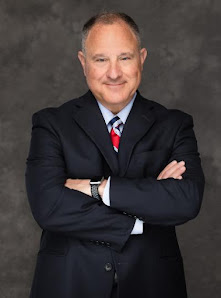CREATORS
December 23, 2025
Mark Twain
once remarked that "Truth is stranger than fiction, but it is because
fiction is obliged to stick to possibilities; truth isn't." This quip was
no more evident than in courtrooms across the country this year.
"True
Crime" had a banner year. There were cases with celebrities and surprises;
mothers and sons; conspiracies and crazies.
Let's
start with the celebrity. Sean "Diddy" Combs is a bona fide star, a
highly successful music artist who has won multiple Grammys. Prosecutors
accused Combs of leading a criminal enterprise that used threats, violence,
forced labor, bribery and other crimes to force women to engage in drug-fueled
sex acts with male escorts called "Freak Offs."
Diddy was
charged by the federal government with racketeering and related sex trafficking
charges. He endured a salacious eight-week trial.
Although
he was acquitted of major sex trafficking and racketeering charges, it was a
pyrrhic victory. He was sentenced in October of 2025 to more than four years in
prison and a $500,000 fine on two counts of using transportation for
prostitution.
The
surprise. In the early morning of Nov. 13, 2022, four University of Idaho
students, Ethan Chapin, 20, Xana Kernodle, 20, Kaylee Goncalves, 21 and Madison
"Maddie" Mogen, 21, were brutally murdered in their off-campus home
in Moscow, Idaho.
The crime
shocked the nation as police gathered evidence and hunted for a suspect. More
than a month later, they arrested Bryan Kohberger, a graduate criminology
student at Washington State University.
Kohberger
maintained his innocence, claiming he was out for a drive at the time of the
murders. Prosecutors said they found DNA evidence, surveillance video and
cellphone records implicating Kohberger.
At first,
Kohberger and his attorneys wanted to rush to trial, then they geared up for a
contentious series of pretrial motions.
Shockingly,
on the eve of a pretrial hearing, Kohberger admitted to killing all four
students to avoid a potential death sentence. He was sentenced to consecutive
life terms for each murder.
The
Conspiracy. Karen Read was accused of running over her boyfriend, a Boston
police officer, John O'Keefe. It was her second trial; the first ended with a
hung jury.
Prosecutors
argued Read struck O'Keefe with her SUV in a snowstorm, while the defense
claimed she was framed in a law enforcement cover-up and that O'Keefe died
because of a beating by drunken partygoers.
Each
morning during the trial, on her way into the courthouse, Read waived and
interacted with throngs of adoring supporters. The trial lasted eight weeks,
with over 30 days of testimony from nearly 50 witnesses.
Read was
found not guilty of murder and manslaughter and guilty of Operating a Motor
Vehicle While Under the Influence. She was sentenced to one year of probation.
The mother
and son. Charlie Adelson, a Florida dentist, was convicted of first-degree
murder in the killing of Dan Markel, a Florida State Law University Professor,
and his sister Wendi Adelson's estranged husband. The killings were carried out
by Charlie's girlfriend and her new lover.
The murder
was allegedly motivated by a child custody dispute between Wendi and Markel.
Wendi
denied any involvement, but guess who was indicted after Charlie was convicted,
their mom, Donna Adelson. Prosecutors alleged that she was the mastermind,
using her wealth and influence to hire hitmen, while the defense argued
insufficient evidence and pointed the finger at other culprits.
Adelson,
like her son, was convicted of first-degree murder, conspiracy and
solicitation. The 75-year-old Donna was sentenced to life in prison plus two
30-year consecutive prison terms.
The
Crazies. Lori Vallow Daybell was the subject of multiple, separate trials in
Idaho and Arizona, where she was convicted of murdering her two children and
conspiring to murder her husband's first wife. As for this year, in April, she
was convicted of conspiring to murder her fourth husband, Charles Vallow, who
was shot and killed by her brother, Alex Cox. In June, she was found guilty of
conspiring to murder her niece's ex-husband, who survived a drive-by shooting.
Vallow represented herself during her last trial.
She is
currently serving consecutive life sentences in prison without the possibility
of parole.
That's a
wrap for 2025. Stay tuned for next year.
Matthew T.
Mangino is of counsel with Luxenberg, Garbett, Kelly & George P.C. His book
The Executioner's Toll, 2010 was released by McFarland Publishing. You can
reach him at www.mattmangino.com and follow him on Twitter @MatthewTMangino
To visit Creators CLICK HERE







